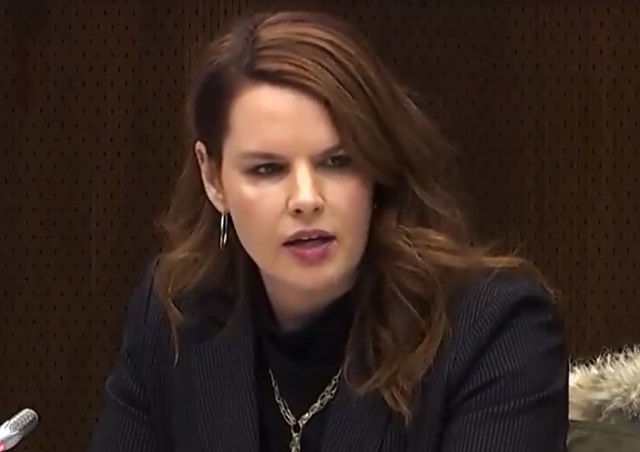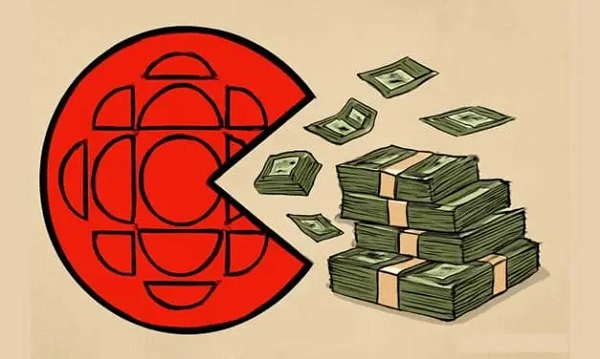National
Conservative MP defends petition calling for no-confidence vote against Trudeau from ‘angry,’ ‘wild socialists’

From LifeSiteNews
The popular petition, supported by MP Michelle Ferreri, has received more than 273,000 signatures.
A Conservative Party of Canada (CPC) MP who backed a petition demanding a vote of no confidence and election call against Prime Minister Justin Trudeau and his Liberal government is defending her petition from “angry” and “wild socialists” after it exploded to move than a quarter of a million signatures.
The official petition, initiated by Peterborough, Ontario resident Melissa Outwater and sponsored by CPC Michelle Ferreri, who represents the Peterborough-Kawartha, Ontario riding, has as of this writing more than 273,000 signatures.
“200k signatures in less than 2 weeks,” Ferreri posted recently on X (formerly Twitter) about her petition.
“Canadians want change. Canadians want affordability.”
When LifeSiteNews reported on the petition November 28, it already had more than 70,000 signatures.
The petition opened for signatures on November 24, and remains live until December 24. It reads, “We, the undersigned, citizens and residents of Canada, call upon the House of Commons to call for a vote of no confidence and a federal election 45 days following the vote.”
Ferreri has been defending her petition from what she has called “wild socialists” who are criticizing her efforts by claiming that anyone can “fake” sign it.
“What is hysterical about these wild socialists is they don’t even do basic google research,” she wrote on X (formerly Twitter) yesterday.
“Every email needs to be validated by the clerk to count. 2. You can only sign the petition once. 3. You must be a Canadian resident or Canadian citizen to sign any HOC petition. 4. Any Canadian citizen can start a petition and it is a powerful democratic way to elevate Canadians concerns.”
Petitions to Canada’s House of Commons can be started by anyone but must have the support of five Canadian citizens or residents along with the support of a sitting MP.
Once a petition has more than 500 verified signatures, it is presented to the House of Commons, where it awaits an official government response.
The stipulations the petition lays out for the vote of no confidence to take place reads: “The citizens of Canada have lost confidence in Justin Trudeau and the Liberal/NDP coalition. We call on the house for a vote of no confidence. We ask for an election 45 days after the vote if won.”
The petition stipulates that the current Liberal government under Trudeau is “not acting in the best interest of all citizens” due to its ideologically charged agenda of going after people’s “civil liberties” and “unbalanced immigration policies.”
“The policies of this government aren’t aligning with the crisis Canada is facing: housing costs, infringement of civil liberties, highest inflation in history, unbalanced immigration policies, taxation to the point of poverty, weakening of our economy by importing natural resources that Canada already has and under-utilizes,” it reads.
Additionally, the petition states that after over eight years with Trudeau in charge, Canadians are losing confidence in his leadership, especially “after five ethics investigations” have had to be conducted.
As a result, the petition states that Canada’s “reputation” is “being tarnished on a global scale under his leadership.”
Ferreri said that “Socialists are mad” about her petition because “they don’t support democracy.”
“If you disagree with an idea, at least get your facts straight. Here I’ll leave a link to the petition for you,” she added.
“A lot of the trolls are very angry because this is the fastest-growing online petition in parliamentary history,” Ferreri said last week on X (formerly Twitter).
“They (the trolls) like to protect their sweet precious Justin Trudeau, so they are saying all these (negative) things online.”
Ferreri said that if her petition reaches 300,000 it will be the highest for an “online” petition in Canadian history.
She added while signing the petition may be “symbolic in many ways” they are “very valuable” as they “elevate” people’s “voice to send a very big message that you are unhappy and that is very important when we work here at parliament.”
Recent polls show that the Trudeau Liberals’ scandal-plagued government’s popularity has taken a nosedive with no end in sight.
Per a recent LifeSiteNews report, according to polls, were a Canadian federal election held today the Conservatives under leader Pierre Poilievre would win a majority in the House of Commons over Trudeau’s Liberals.
Trudeau’s popularity has been falling and his government has been embroiled in scandal after scandal, the latest being a controversy around a three-year carbon tax “pause” he announced on home heating oil, but only in Atlantic Canadian provinces.
Even top Liberal party stalwarts have called for him to resign.
However, the New Democratic Party (NDP) has an informal coalition with Trudeau that began last year, agreeing to support and keep the Liberals in power until the next election is mandated by law in 2025. Until the NDP decides to break ranks with the Liberals, an early election call is unlikely.
Business
Canada’s critical minerals are key to negotiating with Trump

From Resource Works
The United States wants to break its reliance on China for minerals, giving Canada a distinct advantage.
Trade issues were top of mind when United States President Donald Trump landed in Kananaskis, Alberta, for the G7 Summit. As he was met by Prime Minister Mark Carney, Canada’s vast supply of critical minerals loomed large over a potential trade deal between North America’s two largest countries.
Although Trump’s appearance at the G7 Summit was cut short by the outbreak of open hostilities between Iran and Israel, the occasion still marked a turning point in commercial and economic relations between Canada and the U.S. Whether they worsen or improve remains to be seen, but given Trump’s strategy of breaking American dependence on China for critical minerals, Canada is in a favourable position.
Despite the president’s early exit, he and Prime Minister Carney signed an accord that pledged to strike a Canada-US trade deal within 30 days.
Canada’s minerals are a natural advantage during trade talks due to the rise in worldwide demand for them. Without the minerals that Canada can produce and export, it is impossible to power modern industries like defence, renewable energy, and electric vehicles (EV).
Nickel, gallium, germanium, cobalt, graphite, and tungsten can all be found in Canada, and the U.S. will need them to maintain its leadership in the fields of technology and economics.
The fallout from Trump’s tough talk on tariff policy and his musings about annexing Canada have only increased the importance of mineral security. The president’s plan extends beyond the economy and is vital for his strategy of protecting American geopolitical interests.
Currently, the U.S. remains dependent on China for rare earth minerals, and this is a major handicap due to their rivalry with Beijing. Canada has been named as a key partner and ally in addressing that strategic gap.
Canada currently holds 34 critical minerals, offering a crucial potential advantage to the U.S. and a strategic alternative to the near-monopoly currently held by the Chinese. The Ring of Fire, a vast region of northern Ontario, is a treasure trove of critical minerals and has long been discussed as a future powerhouse of Canadian mining.
Ontario’s provincial government is spearheading the region’s development and is moving fast with legislation intended to speed up and streamline that process. In Ottawa, there is agreement between the Liberal government and Conservative opposition that the Ring of Fire needs to be developed to bolster the Canadian economy and national trade strategies.
Whether Canada comes away from the negotiations with the US in a stronger or weaker place will depend on the federal government’s willingness to make hard choices. One of those will be ramping up development, which can just as easily excite local communities as it can upset them.
One of the great drags on the Canadian economy over the past decade has been the inability to finish projects in a timely manner, especially in the natural resource sector. There was no good reason for the Trans Mountain pipeline expansion to take over a decade to complete, and for new mines to still take nearly twice that amount of time to be completed.
Canada is already an energy powerhouse and can very easily turn itself into a superpower in that sector. With that should come the ambition to unlock our mineral potential to complement that. Whether it be energy, water, uranium, or minerals, Canada has everything it needs to become the democratic world’s supplier of choice in the modern economy.
Given that world trade is in flux and its future is uncertain, it is better for Canada to enter that future from a place of strength, not weakness. There is no other choice.
Economy
Ottawa’s muddy energy policy leaves more questions than answers

From the Fraser Institute
Based on the recent throne speech (delivered by a King, no less) and subsequent periodic statements from Prime Minister Carney, the new federal government seems stuck in an ambiguous and ill-defined state of energy policy, leaving much open to question.
After meeting with the premiers earlier this month, the prime minister talked about “decarbonized barrels” of oil, which didn’t clarify matters much. We also have a stated goal of making Canada the world’s “leading energy superpower” in both clean and conventional energy. If “conventional energy” includes oil and gas (although we’re not sure), this could represent a reversal of the Trudeau government’s plan to phase-out fossil fuel use in Canada over the next few decades. Of course, if it only refers to hydro and nuclear (also forms of conventional energy) it might not.
According to the throne speech, the Carney government will work “closely with provinces, territories, and Indigenous Peoples to identify and catalyse projects of national significance. Projects that will connect Canada, that will deepen Canada’s ties with the world, and that will create high-paying jobs for generations.” That could mean more oil and gas pipelines, but then again, it might not—it might only refer to power transmission infrastructure for wind and solar power. Again, the government hasn’t been specific.
The throne speech was a bit more specific on the topic of regulatory reform and the federal impact assessment process for energy projects. Per the speech, a new “Major Federal Project Office” will ensure the time needed to approve projects will be reduced from the currently statutory limit of five years to two. Also, the government will strike cooperation agreements with interested provinces and territories within six months to establish a review standard of “one project, one review.” All of this, of course, is to take place while “upholding Canada’s world-leading environmental standards and its constitutional obligations to Indigenous Peoples.” However, what types of projects are likely to be approved is not discussed. Could be oil and gas, could be only wind and solar.
Potentially good stuff, but ill-defined, and without reference to the hard roadblocks the Trudeau government erected over the last decade that might thwart this vision.
For example, in 2019 the Trudeau government enacted Bill C-48 (a.k.a. the “Tanker Ban Bill”), which changed regulations for large oil transports coming and going from ports on British Columbia’s northern coast, effectively banning such shipments and limiting the ability of Canadian firms to export to non-U.S. markets. Scrapping C-48 would remove one obstacle from the government’s agenda.
In 2023, the Trudeau government introduced a cap on Canadian oil and gas-related greenhouse gas emissions, and in 2024, adopted major new regulations for methane emissions in the oil and gas sector, which will almost inevitably raise costs and curtail production. Removing these regulatory burdens from Canada’s energy sector would also help Canada achieve energy superpower status.
Finally, in 2024, the Trudeau government instituted new electricity regulations that will likely drive electricity rates through the roof, while ushering in an age of less-reliable electricity supply: a two-handed slap to Canadian energy consumers. Remember, the throne speech also called for building a more “affordable” Canada—eliminating these onerous regulations would help.
In summation, while the waters remain somewhat muddy, the Carney government appears to have some good ideas for Canadian energy policy. But it must act and enact some hard legislative and regulatory reforms to realize the positive promises of good policy.
-

 Business2 days ago
Business2 days agoCarney praises Trump’s world ‘leadership’ at G7 meeting in Canada
-

 conflict2 days ago
conflict2 days agoTrump leaves G7 early after urging evacuation of Tehran
-

 Business1 day ago
Business1 day agoThe CBC is a government-funded giant no one watches
-

 conflict1 day ago
conflict1 day agoMiddle East clash sends oil prices soaring
-

 Also Interesting2 days ago
Also Interesting2 days agoHow to Use Bonuses at Magius Casino and Similar Websites
-

 conflict1 day ago
conflict1 day agoTrump Threatens Strike on Khamenei as Israel Pounds Iranian Military Command
-

 Business1 day ago
Business1 day agoTrump makes impact on G7 before he makes his exit
-

 Business2 days ago
Business2 days agoTrump family announces Trump Mobile: Made in America, for America






